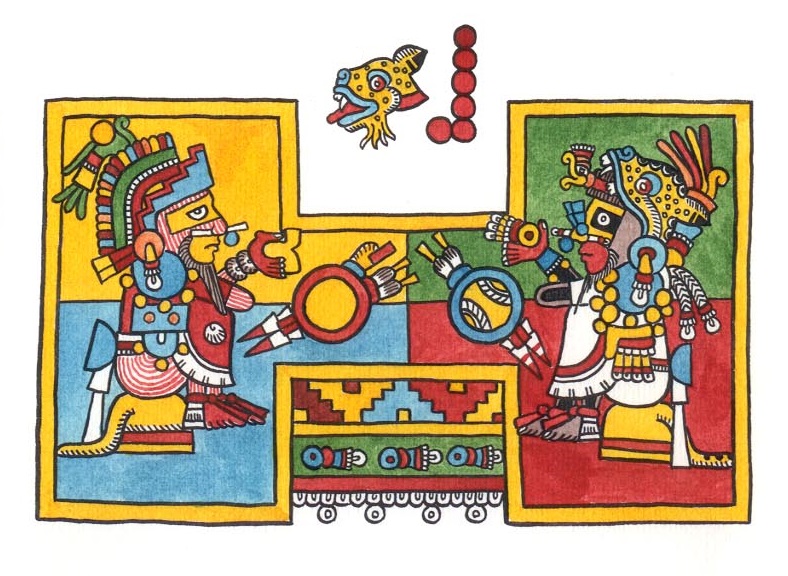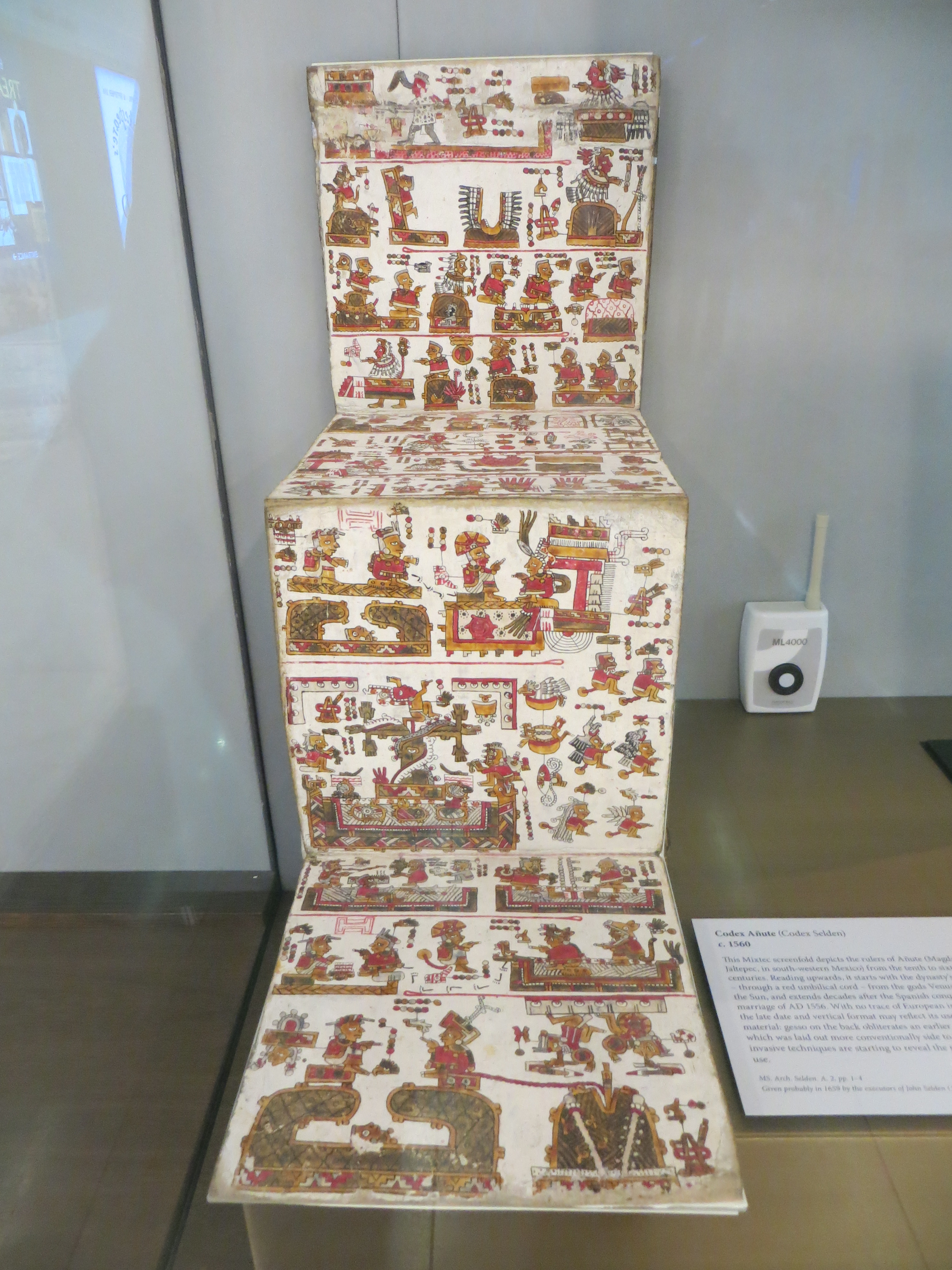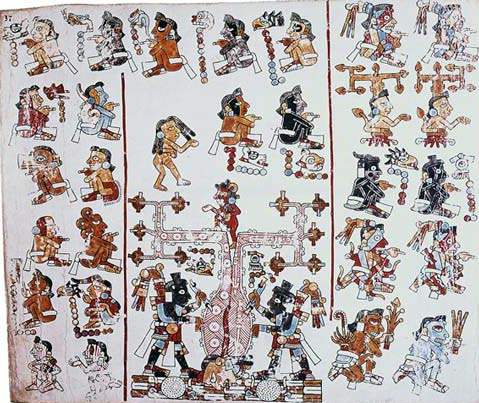|
Mixtec Codices
The Mixtec Group is the designation given by scholars to a number of mostly pre-Columbian documents from the Mixtec people of the state of Oaxaca in the southern part of the Republic of Mexico. They are distinguished by their principally historical and geographical content. Included in the Mixtec Group are: * The Codex Zouche-Nuttall The Codex Zouche-Nuttall or Codex Tonindeye is an accordion-folded pre-Columbian document of Mixtec pictography, now in the collections of the British Museum. It is one of about 16 manuscripts from Mexico that are entirely pre-Columbian in origin .... * The Codex Selden. * The Codex Colombino-Becker. * The Codex Waecker-Gotter. * The Codex Vindobonensis (or Vienna, as it is sometimes called). * The Codex Bodley. See also * Mixtec writing External links Mixtec Group codices [...More Info...] [...Related Items...] OR: [Wikipedia] [Google] [Baidu] |
Mixtec
The Mixtecs (), or Mixtecos, are Indigenous Mesoamerican peoples of Mexico inhabiting the region known as La Mixteca of Oaxaca and Puebla as well as La Montaña Region and Costa Chica of Guerrero, Costa Chica Regions of the state of Guerrero. The Mixtec culture was the main Mixtec civilization, which lasted from around 1500 BCE until being conquered by the Spanish in 1523. The Mixtec region is generally divided into three subregions based on geography: the Mixteca Alta (Upper Mixtec or Ñuu Savi Sukun), the Mixteca Baja (Lower Mixtec or Ñuu I'ni), and the La Mixteca, Mixteca Costa (Coastal Mixtec or Ñuu Andivi). The Alta is drier with higher elevations, while the Baja is lower in elevation, hot but dry, and the Costa is also low in elevation but much more humid and tropical. The Alta has seen the most study by archaeologists, with evidence for human settlement going back to the Archaic period in Mesoamerica, Archaic and Early Mesoamerican chronology#Preclassic Era or Form ... [...More Info...] [...Related Items...] OR: [Wikipedia] [Google] [Baidu] |
Oaxaca
Oaxaca, officially the Free and Sovereign State of Oaxaca, is one of the 32 states that compose the political divisions of Mexico, Federative Entities of the Mexico, United Mexican States. It is divided into municipalities of Oaxaca, 570 municipalities, of which 418 (almost three quarters) are governed by the system of (customs and traditions) with recognized local forms of self-governance. Its capital city is Oaxaca City, Oaxaca de Juárez. Oaxaca is in southern Mexico. It is bordered by the states of Guerrero to the west, Puebla to the northwest, Veracruz to the north, and Chiapas to the east. To the south, Oaxaca has a significant coastline on the Pacific Ocean. The state is best known for #Indigenous peoples, its indigenous peoples and cultures. The most numerous and best known are the Zapotec peoples, Zapotecs and the Mixtecs, but 16 are officially recognized. These cultures have survived better than most others in Mexico due to the state's rugged and isolating terrain. M ... [...More Info...] [...Related Items...] OR: [Wikipedia] [Google] [Baidu] |
Codex Zouche-Nuttall
The Codex Zouche-Nuttall or Codex Tonindeye is an accordion-folded pre-Columbian document of Mixtec pictography, now in the collections of the British Museum. It is one of about 16 manuscripts from Mexico that are entirely pre-Columbian in origin. The codex derives its name from Zelia Nuttall, who first published it in 1902, and Baroness Zouche, its donor. Description The Codex Zouche-Nuttall was probably made in the 14th century and is composed of 47 sections of animal skin with dimensions of 19 cm by 23.5 cm. The codex folds together like a screen and is vividly painted on both sides, and the condition of the document is by and large excellent. It is one of three codices that record the genealogies, alliances and conquests of several 11th and 12th century rulers of a small Mixtec city-state in highland Oaxaca, the Tilantongo kingdom, especially under the leadership of the warrior Lord Eight Deer Jaguar Claw (who died in the early twelfth century at the age of fifty-two ... [...More Info...] [...Related Items...] OR: [Wikipedia] [Google] [Baidu] |
Codex Selden
The Codex Selden (also known as the Codex Añute) is a Mexican manuscript of Mixtec origin. The codex is an account of the genealogy of the Jaltepec dynasty from the tenth to the 16th century. Codex Selden is possibly a fragment of a much longer improperly stored document. Although it was completed after the arrival of the conquistadors in the Mixtec region, it is considered one of the six pre-Hispanic Mixtec codices that survived the Spanish conquest of the Aztec Empire. The last date mentioned in the Codex is 1556, which can be interpreted as the date when the codex was finished. The Codex belonged to the English jurist John Selden, who died in 1654 and left his collection of books and manuscripts at the University of Oxford. It is kept at the Bodleian Library in Oxford (shelfmark MS. Arch. Selden. A. 2). In the 1950s, an accidental scratch revealed that the Selden Codex might overlay an earlier document later covered over with a layer of gypsum and chalk, a palimpsest. But gi ... [...More Info...] [...Related Items...] OR: [Wikipedia] [Google] [Baidu] |
Codex Colombino-Becker
The Codex Colombino is a part of a Mixtec codex held in the collection of the National Museum of Anthropology in Mexico City. It is one of only two Mesoamerican codices that remain in Mexican territory (the other being the Códice Maya de México). It deals with the genealogy, marriages and bellicose conquests of the Mixtec lord Eight Deer Jaguar Claw (fl. 11th century AD). The other half of the Colombino Codex is known as "Becker I", and was purchased by Phillip Becker, a German collector, from the Aja-Villagómez family in Acatlán de Osorio, Puebla. It is currently in Vienna. For that reason, the entire codex often goes by the name Codex Colombino-Becker. Several editions of both the ''Colombino'' and the ''Becker'' have been published. The most commonly used facsimile of the ''Colombino'' is accompanied by the commentary of Alfonso Caso (1966), and that of the ''Becker'' by the notes of Karl A. Nowotny (1961). For some of the history depicted in the ''Colombino-Becker'', ... [...More Info...] [...Related Items...] OR: [Wikipedia] [Google] [Baidu] |
Codex Waecker-Gotter
The Codex Waecker-Gotter, also known as the ''Code Sanchez-Solís'' or ''Codex Egerton'', is a Pre-Conquest-style manuscript from Mexico that has been in the British Museum's collection since 1911 (reference number Am1962,03.8). Description The codex is made of animal skin and consists of 16 leaves, each measuring approximately 27 x 21 cm; the total length of the manuscript is 4.42 m. Both sides of the codex are painted, but over time the condition of the paint has deteriorated, and one page seems to have been deliberately effaced, perhaps by a colonial official, as it bears a Spanish stamp. The manuscript was probably first drawn in the 16th century, with later additions made in the 17th or 18th century. Most experts consider the style of the artwork to be Mixtec with some Aztec elements. Content The document is an important witness to the transition between Pre-Columbian times and the early colonial period in Mexico. It describes a genealogy that comprises 26 different ge ... [...More Info...] [...Related Items...] OR: [Wikipedia] [Google] [Baidu] |
Codex Vindobonensis Mexicanus I
Codex Vindobonensis Mexicanus I, also known as ''Codex Vindobonensis C'', or ''Codex Mexicanus I'' is an accordion-folded pre-Columbian piece of Mixtec writing. It is a ritual-calendrical and genealogical document dated to the 14th century. Contents Codex Vindobonensis has 52 pages with size 26.5 by 22 cm. It was composed in a form of harmony with length 13.5 m. Its weight is 2.687 kg. The text is divided into 10 major sections. In the beginning it presents mythological genealogies of gods. It also contains lists of Mixtec rulers and priests. History It is not certain where the codex was discovered. It was likely discovered in Veracruz and sent to Sevilla, together with the manuscript Codex Zouche-Nuttall, as a gift for Charles V in 1519. The later story of the codex is not well known, but it traveled to Portugal, Rome, Weimar, and finally Vienna. The manuscript frequently changed owners and places in which it was housed. As a result, its name was changed 18 times ... [...More Info...] [...Related Items...] OR: [Wikipedia] [Google] [Baidu] |
Codex Bodley
The Codex Bodley is an important pictographic manuscript of the Mixtec Group and example of Mixtec historiography. It dates to circa 1500 in a variant of the Mixteca-Puebla style of Codex writing. Its colloquial name comes from the Bodleian Library at the University of Oxford, where it's been stored since the 17th century. It is also referred to as the ''"Codex Ñuu Tnoo"'' with ''Ñuu Tnoo-Huahi Andehui'' being the Mixtec name for an Indigenous settlement in Oaxaca, Mexico also known as Tilantongo (directly from its Nahuatl name), which translates to "Black Town-Temple of Heaven." Tilantongo is the location of the modern town of Santiago Tilantongo. History While the exact date of the codex's creation is difficult to establish, judging from its content and style, it was completed before the 1521 Spanish Conquest of Mexico however likely after the year 1500 due to the Mixtec lord Iya Nacuaa Teyusi Ñaña, translated as Eight Deer Jaguar Claw, being noted in the manuscript as ... [...More Info...] [...Related Items...] OR: [Wikipedia] [Google] [Baidu] |
Mixtec Writing
Mixtec writing originated as a logographic writing system during the Post-Classic period in Mesoamerican history. Records of genealogy, historic events, and cultural narratives are found in the pre-Columbian Mixtec codices. The arrival of Europeans in 1520 AD caused changes in form, style, and the function of the Mixtec writings. Today these codices and other Mixtec writings are used as a source of ethnographic, linguistic, and historical information for scholars, and help to preserve the identity of the Mixtec people as migration and globalization introduce new cultural influences. Mixtec history The Mixtec are an indigenous people of Mesoamerica, located in the western region of the modern Mexican states of Oaxaca, eastern part of Guerrero, and southern part of Puebla. The history of the Mixtec people can be traced back to the Formative period, and continues through the Classic and Post-Classic periods to the arrival of Europeans in 1520 AD. Today the region is still populat ... [...More Info...] [...Related Items...] OR: [Wikipedia] [Google] [Baidu] |





